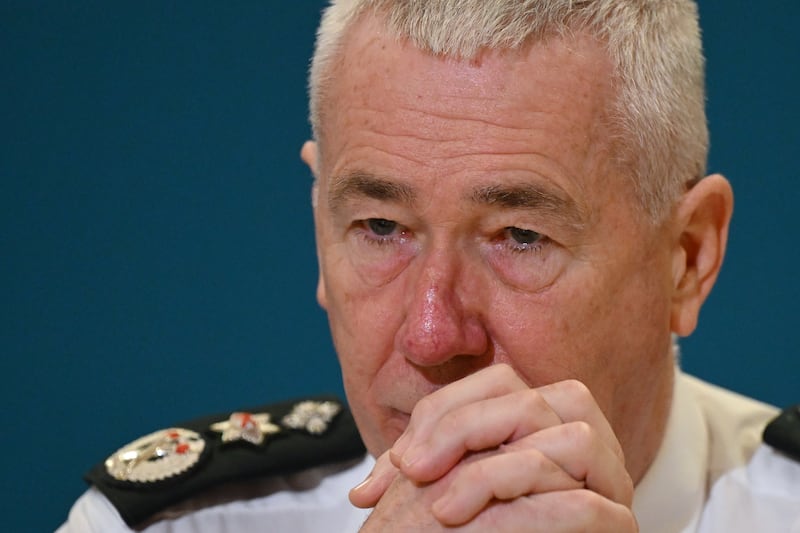At a recent graduation at Trinity College Dublin, something happened for the first time in hundreds of years — and hardly anyone noticed.
The three academics sitting at the top table overseeing the ceremony were all female. For one of them, Prof Linda Doyle, Trinity’s first woman provost in 429 years, it felt like a significant moment.
“I hadn’t noticed until it was pointed out to me afterwards,” she says, in an interview. “And that, to me, is very important. ”
When elected last year, she said in her acceptance speech that she wanted to turn the “extraordinary day” into an “ordinary day” when there were many more women in senior positions like hers.
READ MORE
Those days may be approaching. Today, four of the country’s universities are led by women — no mean feat given that there had never been a female university president in the history of higher education until recently.
Doyle is the 45th provost to lead Trinity. If there is a weight of history of her shoulders, she doesn’t show it. In person, Doyle is warm, funny and down-to-earth. Her open and collegiate leadership style might not fit with traditional notions of a university don, she says, but she’s comfortable with that.
“I think people — men and women — have sometimes very narrow views on what a strong leader looks like. I wouldn’t be shouting or putting my hands up,” she says. “But I can be very firm if I need to be.”
Making difficult decisions is part of a job which, she says, veers from tiny details to the big picture.
[ Trinity College slips in latest set of world university rankingsOpens in new window ]
“Oh my God, there’s not two hours that are the same. You could be going from a multimillion-euro project one minute to the next talking about what time are we going to open the front gate ... It is the most wonderful, amazing job — really demanding, but I love it.”
Cost-of-living crisis
In the background, however, there are major challenges looming. Some threaten the quality of education and the “student experience” in higher education, she says.
“You want to do everything you can to make it as easy as possible for people to go and avail of education,” she says. “Any additional things that start to pile up are going to turn some people off or make it impossible. And to me, the cost of living is huge and [the cost of] accommodation at the moment is enormous.”
She worries that many students risk losing out on “amazing opportunities” to develop skills and mix with others in clubs and societies. College, after all, is much more than grades for modules; it’s about personal development, friendships and new experiences.
“All that gets eroded if you have to commute long distances, or you can only turn up on college few days a week, or if you have to work all the hours that are left over to pay for the accommodation. That’s a really big problem,” she says.
“What actually makes somebody a great hire is not just the subject matter that they know; it’s the other things about them. What makes Irish people successful around the world is their ability to talk, mingle and interact and all of that. So for me, you’re stopping that growth. So, it’s not just stopping fun — it’s actually stopping their full development and college experience.”
Another risk, she says, is that accommodation shortages mean students simply opt to go to college closer to home, or international students begin look elsewhere for study options.
“Ultimately, I would hate it to be a situation that the Dublin universities are only for Dublin people. And Cork universities are for Cork people, and Galway universities are for Galway people. I think that would be so that would just be really bad. I think you need that wider perspective,” she says.
“There’s the international mix in as well. You just really want people from around the world to be able to come here and not be turned off by how hard it is to find somewhere to live.”
Given the isolation of students during the pandemic, she says, they need a proper college experience.
“So much learning comes from mixing with people, picking up things as you go on. We have a generation who spent years in their bedroom on their own. And the last thing they want to do is be on their own on a bus or stuck in their house.”
Student accommodation
A big frustration is that the student accommodation crisis could be tackled with political will, she says.
“If I look at big problems the country has such as the health system, it is a big black hole and it is very challenging. Whereas, when I look at homelessness and housing, I think it is a solvable problem. The will has to be there,” she says.
“I do think things could be done at speed, and things could be done differently. The usual definition of madness is doing things repeatedly the same way and expecting a different outcome. We do need to try different things.”
Just across the courtyard from where she is speaking is the Rubrics, the oldest surviving building on the campus.
The redbrick building, dating back to 1700, was built to accommodate students and fellows. It is an example, she says, of purpose-built student accommodation on college campuses.
“What we build as student accommodation continues to be used as accommodation. We’ll never get involved in speculating or trying to sell on student beds. We’re a safe bet,” she says.
Higher education funding
Another threat to higher education is State funding. On her desk is a graph showing trends in Irish higher education over the past decade or more: student numbers have gone up, while funding has declined.
“How we can talk about Ireland being a great place of education when we’re on the bad graph all the time?” she says.
In relation to the Government’s pledge to provide more than €300 million in additional core funding, following a decade of underfunding, she says it needs to come soon — and not in the form of “little bits of gestures”.
Yet, there are gleaming new buildings popping up on campus. The latest — Printing House Square, the first new public square in Trinity in more than a century — will soon be unveiled. Sceptics, surely, will accuse universities of more poor-mouthing?
[ Government to review pay rates for thousands of PhD studentsOpens in new window ]
“I can see how somebody’s looking in from the outside might think that,” she says, “but the system is completely strained. Over time, that takes away from the quality and time you can give students and the kind of experience that you can give students.”
It is no coincidence, she says, that the best universities in the world tend to have smaller numbers and more time for individual students.
Trinity’s student numbers have climbed above 20,000 for the first time. It is, she says, as big as the college should get for now.
“For the size and space and resources we have, that’s it,” she says. “I think that’s a good size for the country.”
The future, she says, is hard to predict, but is likely to involve redefining how it delivers programmes and the very notion of who students are. Lifelong education and a shift to “micro-credentials”, she says, look set to key areas of focus into the future.
Given that most of Trinity’s income is now privately generated, there are whisperings in academia that college could go private and free itself of State restrictions.
It is not a direction that appeals to Doyle. “I really do believe in public universities, and I think that there’s something so important and core to that, and I think it’s part of the ethos of our country,” she says.
“I have no fear of accountability. I have a huge fear of enormous bureaucracy tying us down and killing us, by the way, which is a totally separate thing ... For me, personally, I think of education as a public good.”
Trinity East: university scales down expansion plans
It was billed as a €1 billion expansion of Trinity in the heart of the Silicon docks, nestled among the biggest tech firms in the world.
Now, however, the college is scaling down its ambitions for its “Trinity East” campus.
“The bottom line is we were hoping the Government would invest in it and they didn’t,” says Linda Doyle. “But the intention — that it becomes a hive of research and innovation culture — remains the same. However, I want to go about it in a totally different way.”
The focus is now on refurbishing existing buildings on the site it owns instead of “shiny new buildings”, with a stronger focus on sustainability and a base for up to 350 researchers and innovators.
Some of the inspiration is being drawn from Building 20, a temporary timber structure erected during the second World War on the Massachusetts Institute of Technology campus, which became a legendary hive of innovation.
“That building was supposed to be there for five or 10 years — but it was still there 50 years later and so much innovation came out of that,” she says. “This is all about ideas, the people, the innovation ... it’s really important that we have something that works with the community there, too.”


















